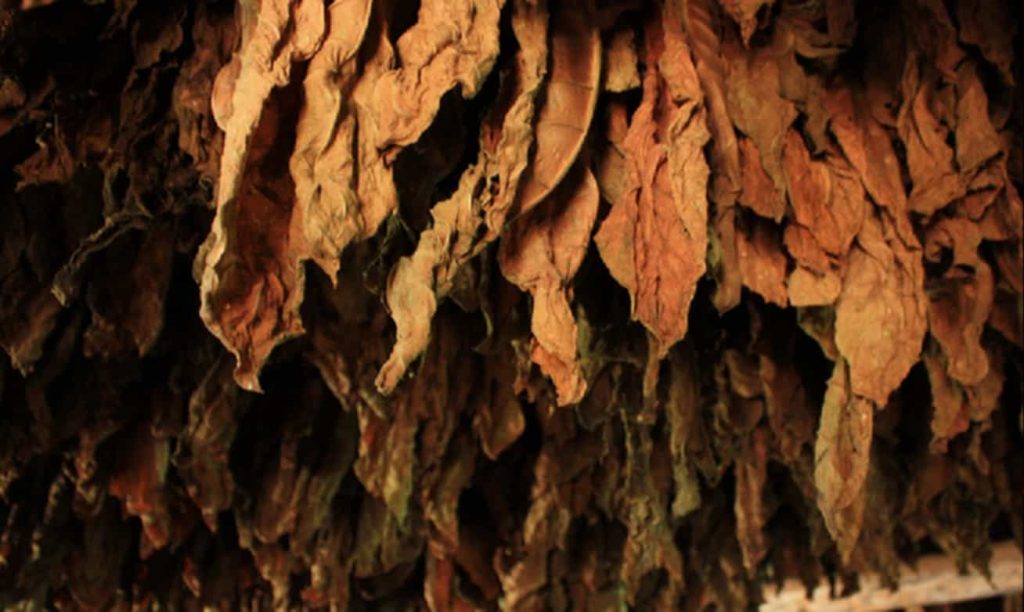
Fire-cured tobacco holds a unique place in the world of tobacco, offering a distinct flavor profile that sets it apart. This intriguing process involves the use of hardwood fires to remove moisture from the tobacco leaves, resulting in a product that is rich in flavor and aroma. The art of fire-curing tobacco is a tradition steeped in history, and its influence on the taste and quality of tobacco products is undeniable. Join us as we delve into the fascinating world of fire-cured tobacco, exploring its origins, the process involved, and its impact on the world of tobacco.
Early Uses and Significance
Historically, fire-curing was a method used to preserve tobacco leaves for shipping abroad, preventing damage from moisture. This process not only ensured the longevity of the leaves but also enhanced their flavor, making them a valuable commodity.
Evolution and Modern Uses
Over time, the use of fire-cured tobacco has evolved. Today, it is used primarily in chewing tobaccos, snuff, self-rolled cigarettes, and pipe blends. In recent years, a trend has emerged incorporating fire-cured tobacco into cigars, adding a new layer of flavor.
Harvesting the Tobacco
The process of fire-curing begins with the harvesting of the tobacco. Dark fire-cured tobacco is ready for harvest when the leaves are mature but not overripe. Mature leaves are thick with somewhat of an oily texture and crack readily when folded during the hot part of the day.
Yellowing
The fire-curing process can be broken down into four phases: yellowing, setting color, drying, and finishing. The degree of yellowing that occurs before fires are started will affect the color of the cured leaf. Tobacco should be allowed to yellow as much as possible without heat.
Setting Color
The setting color phase involves the application of heat, which helps to fix the color of the leaves. This is a critical step in the fire-curing process as it directly influences the final color of the tobacco.
Drying
During the drying phase, the moisture content of the tobacco leaves is gradually reduced. This is achieved by maintaining a continuous or intermittent low fire, depending on the process and the tobacco.
Finishing
The finishing phase involves the final drying and maturation of the tobacco leaves. Care should be taken to avoid excessive moisture, which can lead to staining or spoilage.
Flavor Profile
Fire-cured tobacco is famous for its smoky, woodsy flavor. The flavors captured in fire-cured tobacco are predominantly decided by the wood that is burned during the curing process, with oak and mesquite being common choices.
Physical Attributes
Fire-cured tobacco leaves are known for their thick body, oiliness, stretch, and good absorption capacity. These characteristics make them well-suited to a variety of uses in the tobacco industry.
Light and Dark Fire-Cured Tobacco
There are both light and dark varieties of fire-cured tobacco. While they share the same curing process, they differ in their flavor profiles and uses.
Usage in Different Tobacco Products
Fire-cured tobacco is used in a variety of tobacco products. It is a key ingredient in pipe tobacco, chewing tobacco, and snuff. In addition, it is also used in self-rolled cigarettes and pipe blends outside the U.S. More recently, it has found its way into the cigar industry, adding a new layer of flavor to cigars.
what are the characteristics of fire-cured tobacco
Fire-cured tobacco is a unique type of tobacco that undergoes a special curing process involving the use of open fires. This process imparts a distinct smoky flavor to the tobacco, making it a popular choice for certain tobacco products. The leaves are hung in large barns that are sealed tightly to ensure that the smoke can encompass the leaves. The fire is often covered with sawdust to produce a smoldering effect, which helps to preserve the tobacco’s natural oils and yields a finished product that contains high amounts of nicotine.
There are two main types of fire-cured tobacco: light and dark. Light fire-cured tobacco is known for its lighter smoked smell and flavor. It is often used in cigarettes and hookah blends. Dark fire-cured tobacco, on the other hand, is known for its pungent aroma and flavor. It is primarily grown in a limited geographical area covering western Kentucky and northwestern Tennessee.
The fire-curing process involves hanging tobacco in large barns where fires of hardwoods are kept on continuous or intermittent low heat. This process produces a tobacco low in sugar and high in nicotine. The flavors captured in fire-cured tobacco are predominately decided by the wood that is burned in most cases, oak and mesquite are used.
Fire-cured tobacco leaves are known for their smoky, woodsy flavor. The flavor intensity varies between light and dark fire-cured tobacco, with dark fire-cured tobacco being more pungent. The leaves also have a thick body, oil, stretch, and good absorption capacity.
Conclusion
Fire-cured tobacco, with its unique curing process and distinctive flavor, holds a special place in the tobacco industry. From its historical significance to its modern uses, this type of tobacco continues to be a favorite among tobacco enthusiasts for its rich, smoky flavor and high nicotine content.